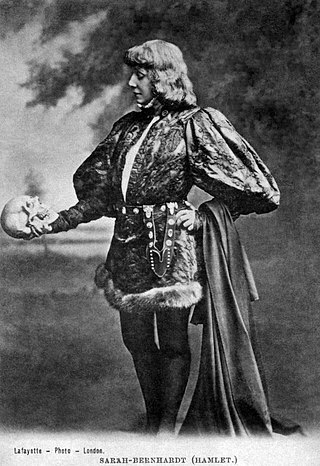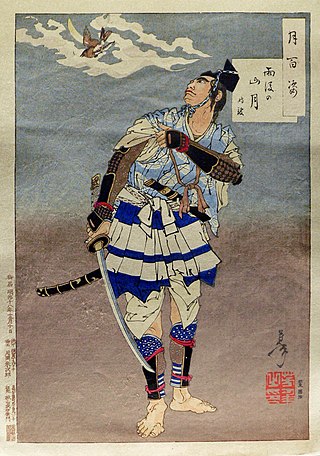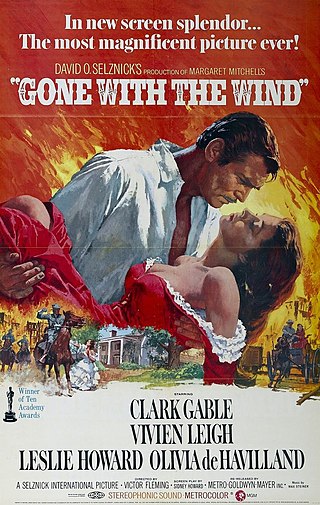
Acting is an activity in which a story is told by means of its enactment by an actor or actress who adopts a character—in theatre, television, film, radio, or any other medium that makes use of the mimetic mode.

A comedy film is a category of film which emphasizes humor. These films are designed to make the audience laugh through the amusement. Films in this style traditionally have a happy ending. Comedy is one of the oldest genres in the film—and derived from the classical comedy in theatre. Some of the earliest silent films were comedies, as slapstick comedy often relies on visual depictions, such as sight gags and pratfalls, so they can be enjoyed without requiring sound. To provide drama and excitement to silent movies, live music was played in sync with the action on the screen, by pianos, organs, and other instruments. When sound films became more prevalent during the 1920s, comedy films grew in popularity, as laughter could result from both burlesque situations but now also from humorous dialogue.

Hope is an optimistic state of mind that is based on an expectation of positive outcomes with respect to events and circumstances in one's life or the world at large. As a verb, its definitions include: "expect with confidence" and "to cherish a desire with anticipation".

Method acting, informally known as The Method, is a range of training and rehearsal techniques, as formulated by a number of different theatre practitioners, that seeks to encourage sincere and expressive performances through identifying with, understanding, and experiencing a character's inner motivation and emotions. These techniques are built on Stanislavski's system, developed by the Russian actor and director Konstantin Stanislavski and captured in his books An Actor Prepares, Building a Character, and Creating a Role.

A villain is a stock character, whether based on a historical narrative or one of literary fiction. Random House Unabridged Dictionary defines such a character as "a cruelly malicious person who is involved in or devoted to wickedness or crime; scoundrel; or a character in a play, novel, or the like, who constitutes an important evil agency in the plot". The antonym of a villain is a hero.

Discipline refers to rule following behavior, to regulation, order, control and authority. It may also refer to punishment. Discipline is used to create habits, routines, and automatic mechanisms such as blind obedience. It may be inflicted on others or on oneself. Self discipline refers to the practice of self restraint, controlling one's emotions, and ignoring impulses.
In literature and writing, stylistically elements are the use of any of a variety of techniques to give an auxiliary meaning, ideas, or feeling to the literalism or written.
User-centered design (UCD) or user-driven development (UDD) is a framework of process in which usability goals, user characteristics, environment, tasks and workflow of a product, service or process are given extensive attention at each stage of the design process. These tests are conducted with/without actual users during each stage of the process from requirements, pre-production models and post production, completing a circle of proof back to and ensuring that "development proceeds with the user as the center of focus." Such testing is necessary as it is often very difficult for the designers of a product to understand intuitively the first-time users of their design experiences, and what each user's learning curve may look like. User-centered design is based on the understanding of a user, their demands, priorities and experiences and when used, is known to lead to an increased product usefulness and usability as it delivers satisfaction to the user.

Stanislavski's system is a systematic approach to training actors that the Russian theatre practitioner Konstantin Stanislavski developed in the first half of the twentieth century. His system cultivates what he calls the "art of experiencing". It mobilises the actor's conscious thought and will in order to activate other, less-controllable psychological processes—such as emotional experience and subconscious behaviour—sympathetically and indirectly. In rehearsal, the actor searches for inner motives to justify action and the definition of what the character seeks to achieve at any given moment.

Screenwriting or scriptwriting is the art and craft of writing scripts for mass media such as feature films, television productions or video games. It is often a freelance profession.
Practical Aesthetics is an acting technique originally conceived by David Mamet and William H. Macy, based on the teachings of Stanislavsky, Sanford Meisner, and the Stoic philosopher Epictetus.
Ballet d'action is a hybrid genre of expressive and symbolic ballet that emerged during the 18th century. One of its chief aims was to liberate the conveyance of a story via spoken or sung words, relying simply on quality of movement to communicate actions, motives, and emotions. The expression of dancers was highlighted in many of the influential works as a vital aspect of the ballet d'action. To become an embodiment of emotion or passion through free expression, movement, and realistic choreography was one chief aim of this dance. Thus, the mimetic aspect of dance was used to convey what the lack of dialogue could not. Certainly, there may have been codified gestures; however, a main tenant of the ballet d'action was to free dance from unrealistic symbolism, so this remains an elusive question. Often, props and costume object were involved in the performance to help clarify character interaction and passions. An example would be the scarf from La Fille mal gardée, which represents the love of the male character and which the female character accepts after a coy moment. Props were thus used in harmony with dancer movement and expression. Programs for plays were also a place to explain the onstage action; however, overt clarifications were sometimes criticized for sullying the art of the ballet d'action.

Robert Cohen is an American university professor, theatre director, playwright, and drama critic. Now a Claire Trevor Professor emeritus after 50 years teaching at the University of California, Irvine since 1965, he continues to write, and has published many books on theatre, along with articles, dramatic anthologies and many plays, and has conducted advanced teaching residencies in numerous countries and much of the United States. He has been called a Master Teacher by the Voice and Speech Trainers Association, has been praised as a "walking theatre directory and encyclopedia" by his fellow teachers, and has been honored during his career with the Polish Medal of Honor, the Honoris Causa Professor Degree at Babes-Bolyai University in Romania, UCI's Distinguished Professor of Research, and the Career Achievement Award from the Association for Theatre in Higher Education.

Exaggeration is the representation of something as more extreme or dramatic than it really is. Exaggeration may occur intentionally or unintentionally.

Determination is a positive emotional feeling that involves persevering towards a difficult goal in spite of obstacles. Determination occurs prior to goal attainment and serves to motivate behavior that will help achieve one's goal. Empirical research suggests that people consider determination to be an emotion; in other words, determination is not just a cognitive state, but rather an affective state. In the psychology literature, researchers have studied determination under other terms, including challenge and anticipatory enthusiasm; this may explain one reason for the relative lack of research on determination compared to other positive emotions.
Scene study is a technique used to teach acting. One or more actors perform a dramatic scene and are then offered feedback from teachers, classmates, or each other.

An actor or actress is a person who portrays a character in a production. The actor performs "in the flesh" in the traditional medium of the theatre or in modern media such as film, radio, and television. The analogous Greek term is ὑποκριτής (hupokritḗs), literally "one who answers". The actor's interpretation of a role—the art of acting—pertains to the role played, whether based on a real person or fictional character. This can also be considered an "actor's role," which was called this due to scrolls being used in the theaters. Interpretation occurs even when the actor is "playing themselves", as in some forms of experimental performance art.

In film and television, drama is a category or genre of narrative fiction intended to be more serious than humorous in tone. Drama of this kind is usually qualified with additional terms that specify its particular super-genre, macro-genre, or micro-genre, such as soap opera, police crime drama, political drama, legal drama, historical drama, domestic drama, teen drama, and comedy-drama (dramedy). These terms tend to indicate a particular setting or subject-matter, or else they qualify the otherwise serious tone of a drama with elements that encourage a broader range of moods. To these ends, a primary element in a drama is the occurrence of conflict—emotional, social, or otherwise—and its resolution in the course of the storyline.
Method acting is sometimes employed by certain actors to evoke realistic emotions into their performance by drawing on personal experiences. Raymond Hamden, a clinical and forensic psychologist, defines the purpose of method acting as "compartmentalizing their own feelings while playing another character [so] they could bring the emotions of that personal feeling to cry if they needed to with that character."
In literature, pace, or pacing is the speed at which a story is told—not necessarily the speed at which the story takes place. The number of words needed to write about a certain event does not depend upon how much time the event takes to happen; it depends upon how important that moment is to the story. The pace is determined by the length of the scenes, how fast the action moves, and how quickly the reader is provided with information. It is also sometimes dictated by the genre of the story: comedies move faster than dramas; action adventures move faster than suspense. A dragging pace is characteristic of many novels turned down by publishers, and of some that find their way into print but not into the hearts and recommendations of readers. Manuscripts that move too slowly usually discourage readers from reading on.












